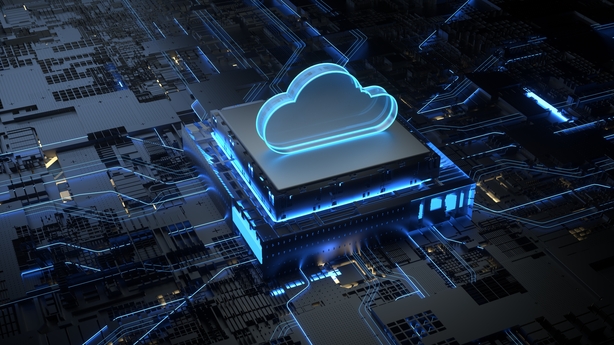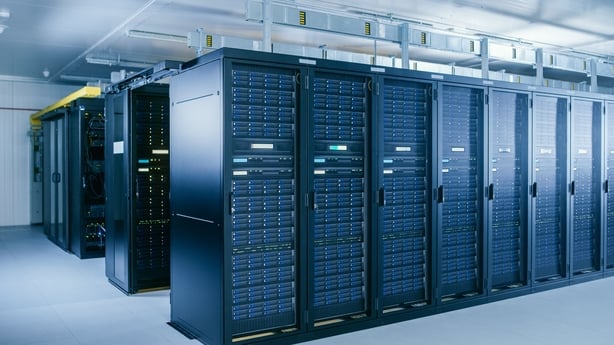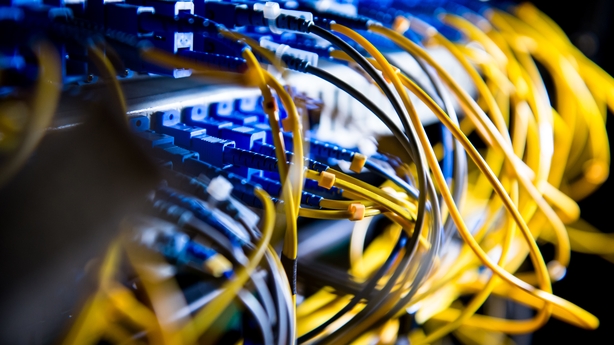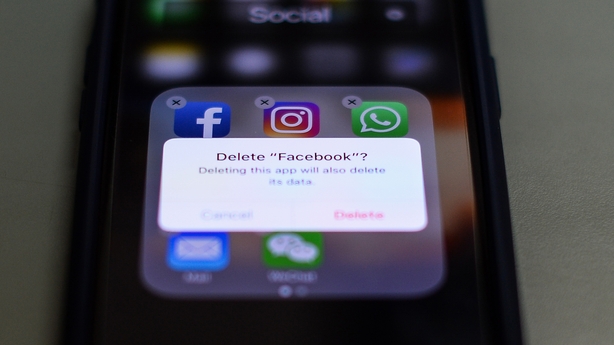When we talk about digital clutter, nowadays, we're not just talking about all of the icons on your computer’s desktop.
That’s because we have files and folders, photos and apps building up in multiple places now – probably across multiple devices too.
You have your computer desktop, and all of the files buried within, but also your smartphone – and maybe a tablet – with lots of files and apps of their own.
And within those apps is a whole other layer of clutter.
Within your e-mail client there may well be tens of thousands of messages waiting for you – and maybe hundreds that are still unread.
That’s not to mention all of the other 'inboxes’ we manage – because there’s also all of the messaging apps we use, and direct message platforms in various social media apps.
You maybe have thousands of photos on your phone, too – the majority of which you’ll never even look at again.
And you likely have files on multiple clouds too – some are on Google’s cloud, some are on Apple’s, some are on Microsoft’s.
And that very easily builds to become a really hard-to-manage mess – even for the most organised of people.
But surely it can’t be as bad as real life clutter…
We need your consent to load this rte-player contentWe use rte-player to manage extra content that can set cookies on your device and collect data about your activity. Please review their details and accept them to load the content.Manage Preferences
There have actually been multiple studies on this in recent years – and the indication is that it has just as much of an impact on us as having real, physical clutter around the place.
Because the problem with clutter isn’t the mess – it’s the lack of control. That’s what makes us feel stressed, and probably frustrated too, because we struggle to find the thing that we need or do the thing that we want.
And in a lot of ways it’s easier to lose control with our digital worlds.
Because we’re constantly generating so much digital information, and there are so many sources of information at hand, but there’s also very little incentive to manage things.
At least if you had a pile of papers on your desk, it can only get so big and messy before you have to deal with it.
And you would see an immediate benefit to sorting that out, dumping what needs to be dumped, filing away what needs to be kept. But when it’s digital, space usually isn’t an issue.
In fact we’re almost encouraged to hoard our digital files – and we maybe don’t connect that to the problems it creates on a daily basis.
What kind of problems?
It can be simple stuff – but these things all add up to bigger sources of stress.
For example, say you’re looking for a small bit of information – maybe, a friend’s postal address. You know you’ve gotten it from them in the past, but you just can’t remember where or when.
So you start searching through texts from them, but the search function is crap so you’re not sure if it’s reliable, so you have to scroll through them manually.
But there are loads of messages in the thread, so doing that is going to take an age.
After a while you still can’t find it – so you try the same on Whatsapp.
Or, you think, maybe they emailed it to you. Or send it over a Twitter DM.
Or maybe you actually got the address from someone else – so you need to go and search other message threads.
You think you might have made a note of it somewhere else – but you can’t find it in your notes app, or in any document.
That feeling of frustration and stress is just the same as it would be if you were leafing through piles of papers or notebooks scattered around your room.
That can slow us down, too, can’t it?

Absolutely.
If you think of that example with the address – that’s all time spent hopping in and out of apps, trying to think of the correct collection of words to get you the result you want.
Not to mention the head space you give up – even when you’re not actively searching around – because you’re still trying to figure out where the information is.
So, on a personal level, that’s simply a waste of your time – just as much as it is a source of frustration.
If you apply the same to a business context, that kind of digital clutter is also a bad thing in terms of worker productivity, and there’s ultimately a financial cost to that.
Not to mention the very practical impact too much cluttered data has on our ability to get things done.
Because if your device’s hard drive is full – and you’re relying on lots of different apps at any one time – that’s going to impact how well the device itself works.
And that’s just another layer of frustration – and time-wasting.
Aren’t these the kinds of problems that technology was supposed to fix?

The early days of cloud computing told us that this technology was going to make our lives so much better.
In part because we wouldn’t need to worry about having powerful devices any more – everything we need would be sitting waiting for us on the cloud - just a click or a tap away.
There is a grain of truth to that, but it overlooked the fact that we would have multiple clouds – that don’t really talk to each other.
So now, rather than having everything on your computer, for better or worse, now we have everything scattered across multiple silos.
And while there are sometimes ways to link them together it’s not always easy and it doesn’t always work as smoothly as it should.
The truth is the tech companies don’t have an incentive to fix that problem, either, because they want to make their cloud as attractive as possible, and their rival’s cloud as inconvenient as they can.
They want to lock your data in so it’s too much hassle for you to go somewhere else.
How does all this have a negative impact on the environment?

When we talk about cloud computing – we’re actually talking about are data centres.
Because those big data centres that we’re all very familiar with here in Ireland are ‘the cloud’ that stores all of our data remotely, so we can access it wherever we are and whatever device we’re using.
And we know just how much energy data centres use – and that figure is constantly rising, as more centres get build, they get bigger, and the amount of data they’re holding increases.
But data centres are actually fairly data inefficient– because an awful lot of what they hold isn’t being used.
The industry has a term – dark data – referring to all of the information that’s stored on servers and then never accessed again.
On a personal level, that could be an email you read 10 years ago – but you didn’t delete it, so it’s still on a server somewhere.
Or a video you recorded on your phone that you haven’t looked at since.
Or maybe it’s your Facebook profile. Even though you never log in anymore you didn’t delete it, so it – and all of the things you uploaded and posted to it back in the day – are still sitting there.
But the big culprits are probably companies – especially ones that generate a lot of digital paperwork, that they have to keep for years for regulatory reasons.
Think of financial services companies, or legal firms.
It’s estimated that, for some companies, as much as 90% of the data they control is ‘dark’ data that they never actually go back to and make use of.
And it’s using energy, even if it’s not being accessed?

The whole idea of the cloud or data centre is that the information on it is immediately accessible – and that means that the server it’s sitting on (or in many cases servers, because the data is generally backed up and replicated across multiple locations) need to be switched on at all times, day or night.
Even if you haven’t logged into Facebook in 10 years – if you go there now you’ll immediately find your profile, with everything on it that was there a decade ago.
That’s because the data has been sitting on a server somewhere, waiting for you to return.
Now, on a per-byte basis, the amount of energy a server is using is relatively small.
Storing one gigabyte of data a year is estimated to take three to seven kilowatt-hours – in other words, storing a few hundred good quality photos a year uses maybe a little bit more energy than your smartphone.
But, of course, most of us now would have tens, hundreds or even thousands of gigs of data on the cloud.
And when you multiply that by the billions of people who are active online, it suddenly adds up to a significant carbon footprint.
So what can we do to fix this?

Unfortunately the solution to digital clutter is about the same as the one for real clutter – you need to sit down and sort it all out.
That means trying to pull various documents together into some kind of folder system – and being ruthless when it comes to deleting files that you don’t have any use for any more.
It’s also about being more proactive on a day-to-day basis. Going back to that lost address example, the solution there is to put that information into your contacts book, even the one on your phone, immediately. That way it doesn’t matter if you can’t find the email or text years later.
A good step in any digital Spring Clean would be to think about the apps you have on your phone, and the services you’ve signed up to.
See if you can pull all of your data into one ‘cloud’ too – so that you’re not having to trapse through multiple services to find what you want.
And if you don’t use something, delete your account, and delete the app.
That’s good practice from a data protection point of view, but it also means your account details aren’t taking up server space for years into the future.
And if you do have lots of data that you want to keep, but know you’re not going to need immediate access to, consider putting it all on a large external hard drive.
Backing up your data like this is generally good practice anyway - but it also means you’re putting the clutter you don’t need out of the way, and taking it off a server, so it’s no longer wasting energy on your behalf.







